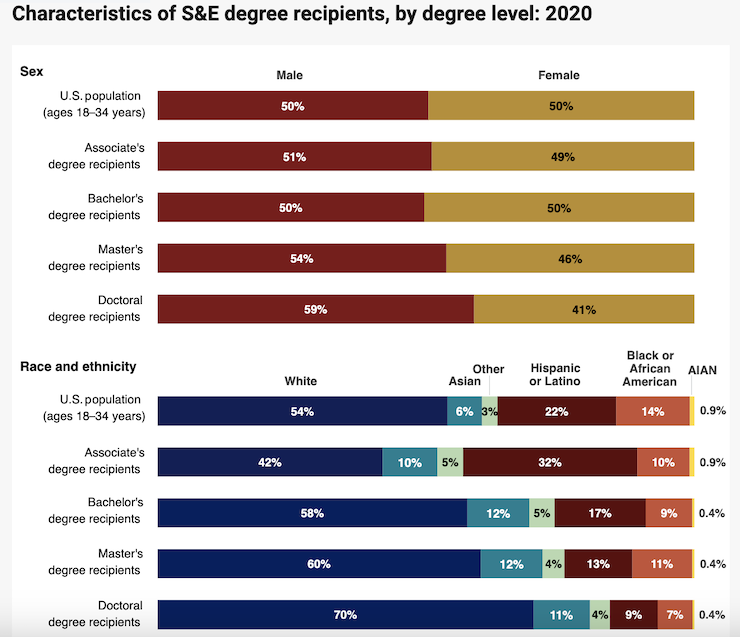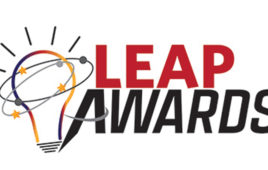Despite recent skepticism over DEI initiatives in industry, there are solid reasons for its continuation and expansion on the straightforward basis of simple justice.
Miles Budimir
Senior Editor
There has been a lot of buzz surrounding diversity, equity, and inclusion (DEI) initiatives in the U.S. recently, with most of it coming in the form of a critique of DEI initiatives themselves. Just this year, several states in the U.S. have sought to push through laws banning DEI initiatives or at least severely curtailing their reach.
Most of these anti-DEI measures are aimed at educational institutions, from primary schooling up through colleges and universities. But what about other parts of the economy, such as businesses in general and more specifically the engineering and tech sectors?
DEI basics
First, what exactly is DEI? At its foundation, it is a framework that aims at promoting the fair treatment and full participation of all people, but especially groups who have been historically underrepresented or discriminated against based on any number of factors including their ethnic identity, race, gender, religion, sexual orientation, age or disability.
The way most people understand such DEI initiatives is via diversity training programs that companies have implemented over the past few decades. And while there may be some debate about the overall effectiveness of such programs over time, it seems clear enough that the main goal of such programs, being open to and inclusive of people, is praiseworthy and a goal worth striving for.

Particularly in regards to racial discrimination, a recent piece in the Harvard Business Review puts it this way: “Most effective DEI programs use racial data to identify discriminatory barriers that are compromising fairness and meritocracy in the workplace, and to develop initiatives that remove those barriers for everyone.” In this context, it highlights the benefits to companies of such policies for what it says are at bottom legal reasons; that is, reducing risk to companies of discrimination suits and claims of a hostile work environment.
Barring justifications that have solely legal benefits, do DEI initiatives produce the benefits espoused? Research from McKinsey & Company over the past decade has shown that DEI programs do in fact produce positive outcomes. In fact, McKinsey’s research has been based on a wide net of data beyond the United States, encompassing 15 countries and more than 1,000 large companies. The results show a connection between business performance and diversity. All of which makes the business case for diversity quite robust, with results being replicated in other parts of the world including Latin America and Central Europe.
DEI and engineering
So how does DEI look within the engineering world? Long known as a field that skews heavily male and white, there has been some progress in the field becoming more diverse, both in terms of racial and gender diversity, although the numbers are still not representative of U.S. population as a whole.
One measure of diversity in engineering is the number of women and minorities in the field. The truth is that due to structural societal reasons, for much of the past century and earlier, women and minorities did not have access to the same educational opportunities that white males enjoyed.
To take the example of women, according to figures available for 2020 presented by the National Science Foundation (NSF) and the National Center for Science and Engineering Statistics (NCSES), women number 51% of the total U.S. population, with men at 49%. With regards to the STEM workforce, men accounted for 65% of the workforce while women represented 35% of the workforce in STEM careers.
When it comes to science and engineering (S&E) degrees, for the year 2020, in the U.S. the number of S&E bachelors level degrees earned by men and woman was a 50/50 split, with the numbers falling off about 5% for women earning masters degrees and PhDs. When race is factored in, again for the year 2020, whites earned 58% of all S&E bachelors degrees with African-Americans earning 9% of S&E bachelors degrees and Hispanic or Latino making up 17%.

Source: National Center for Education Statistics, Integrated Postsecondary Education Data System, Completions Survey, 2020. U.S. population data from Census Bureau, Current Population Survey, Annual Social and Economic Supplement, 2021.
The major engineering organizations in the U.S. have recognized the importance of DEI initiatives and have made an effort to promote diversity within the engineering profession. For instance, the National Academy of Engineering’s (NAE) defining statement on DEI reads: “The National Academy of Engineering, in unison with the National Academy of Sciences and the National Academy of Medicine, embraces the core principles of DEI and celebrates the very differences that make us stronger, smarter, and more effective as individuals, professionals and members of society.”
That broad understanding of how DEI principles apply not only to our lives as members of society but also in our professional lives is echoed by the National Society of Professional Engineers’ (NSPE) outlook as well. It acknowledges that for a long while the engineering profession has addressed the core issues of DEI via conferences, webinars, and special reports, while understanding that these challenges exist within the larger context of systemic racism in the U.S.
The NSPE has asked their members to consider the question that often is raised around these topics; why should I care about diversity in engineering? A large part of the answer involves the value of ensuring that the engineering profession itself is an accurate reflection of society, and that diversity and inclusion are a key aspect of bringing that about.
Ethics and DEI
The NSPE goes on to suggest that professional engineers certainly can, and should, contribute to solutions to the problems that DEI issues raise, noting that “The best engineers, after all, are team players, adaptable, tenacious when faced with the most difficult challenges, and dedicated to an ethical obligation that puts the public first.”
The idea of an ethical obligation of putting the public first is in line with the NSPE’s own code of ethics as well as the ethical codes of other engineering organizations including the IEEE, the ASME (American Society of Mechanical Engineers), and ASCE (American Society Civil Engineers), as well as the ACM (Association for Computing Machinery) and others. Specifically, each of these organization’s code of ethics places a moral obligation to the public as its highest moral principle. Or in the words of the NSPE’s first fundamental canon of its code of ethics, that engineers should “…hold paramount the safety, health, and welfare of the public.”
So one important connection that DEI initiatives have with ethics is recognizing that one of the best ways to achieve DEI goals within engineering disciplines is to have engineers who accurately represent the public; or in other words, that look like that public. And as America gets more diverse, this should make perfect sense as a natural evolution of society.
This issue of representation reflects one of the most basic moral principles, that of justice or fairness. DEI initiatives as a whole are a practical realization of justice, specifically distributive justice. This sense of justice is concerned with the ways in which a society allocates resources, which includes access to education as well as access to certain jobs including professional careers.
Another relevant moral principle involved is that of care. This principle, broadly speaking, encourages one to consider others. The moral principle of care is expansive and covers not only familial relations but extends to friends and acquaintances, colleagues and coworkers, and ideally to humanity more generally; that is, to all human beings one encounters. In the scope of DEI, the principle of care means just that one should consider others (all others), as a standalone moral duty itself, not necessarily tied to any outcomes or benefits.
In other words, the moral principles of justice and care represent two ways that one can show basic respect for another’s dignity as a human being. And in the end, that is really what DEI initiatives are all about; educating us all on how to treat all people fairly so that everyone can freely participate in society to the best of their ability and desire.
Sources
Filed Under: NEWS • PROFILES • EDITORIALS, Engineering Diversity & Inclusion




